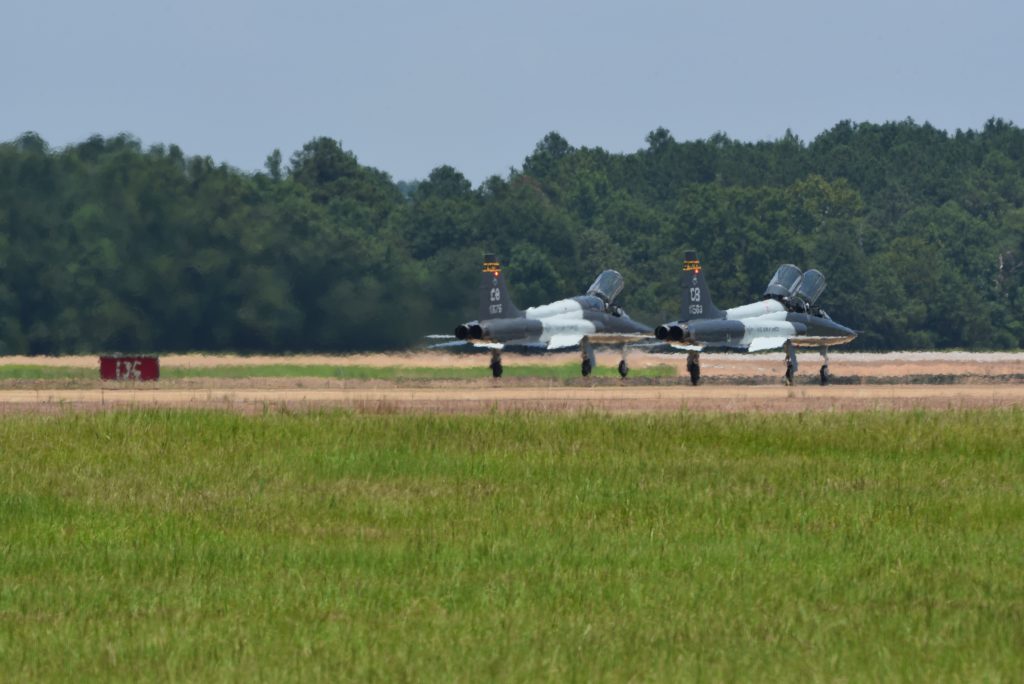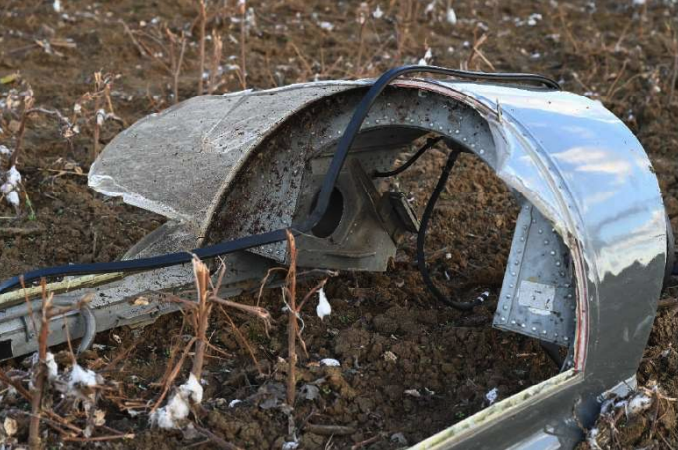A large bird struck the canopy of a T-38 and sent debris flying into the trainer jets’ engines, forcing the pilot to eject and the aircraft to crash last November, according to a new Air Force accident investigation report.
The mishap, which resulted in the complete destruction of the T-38, was unavoidable and the sole cause of the loss, investigators said.
The July 26 release of the accident report comes more than eight months after the Nov. 7 incident near Columbus Air Force Base, Miss. Eleven days later, another T-38 experienced an in-flight emergency, forcing the pilot to execute a “wheels-up” landing.
The Air Force has yet to release a report on the second incident.
According to the Accident Investigation Board, the Nov. 7 incident came during a routine instructor continuation training sortie, in which two T-38s flew with no student pilots aboard.
Planners recognized increased risk in the mission, given that it was the pilots’ second flight that day, they would fly lower to the ground, and there was a moderate risk of bird strikes, according to the report.
However, investigators noted that Columbus is “generally at bird watch condition moderate” and that mitigation measures were discussed during the preflight briefing. They also stated that “it is not uncommon for an instructor to fly twice in one day.”
Within five minutes of takeoff, as the planes were maneuvering into a line abreast formation at approximately 3,000 feet, one plane struck a “large bird,” the report states.
“The front canopy was basically open,” the pilot told investigators. “To me it looked like it was just, most of it was gone.”

The jet’s flight data recorder showed the left engine dropping to zero revolutions per minute with a rise in exhaust gas temperature, indicative of a seizure. The right engine, meanwhile, was able to keep going at reduced power, indicating a compressor stall “when the engine does not have a proper distribution of airflow; the engine is still turning but will have a loss of thrust and therefore is not as effective as needed to sustain flight,” investigators stated.
The pilot quickly identified the incident as a bird strike and told the other T-38’s pilot they needed to make an emergency landing at a nearby airport. Within 90 seconds, however, the right engine started to fail as it exceeded temperature limits and failed to produce enough thrust. The pilot tried to recover the engine for 24 seconds, then punched out at 680 feet above ground level. By then, two minutes had passed since the bird strike.
The aircraft crashed some 20 miles away from Columbus, completely destroyed, a loss valued at $8.5 million. The pilot suffered minor injuries from the bird strike and was medically cleared within 24 hours.
Investigators at the crash scene recovered parts of the T-38 canopy, heavily damaged and with small amounts of bird remains on it. They inspected the engines and discovered heavily damaged compressor blades in both, with “white granular material” in one that was consistent with the acrylic canopy. No bird remains were found in either engine.
The report’s conclusion states that the pilot “could not have avoided the bird” and acted as an experienced pilot should in an emergency. The report also concluded that “the Columbus AFB Bird Aircraft Strike Hazard Program and its execution by the tower, operations supervision, and pilots were satisfactory.”
